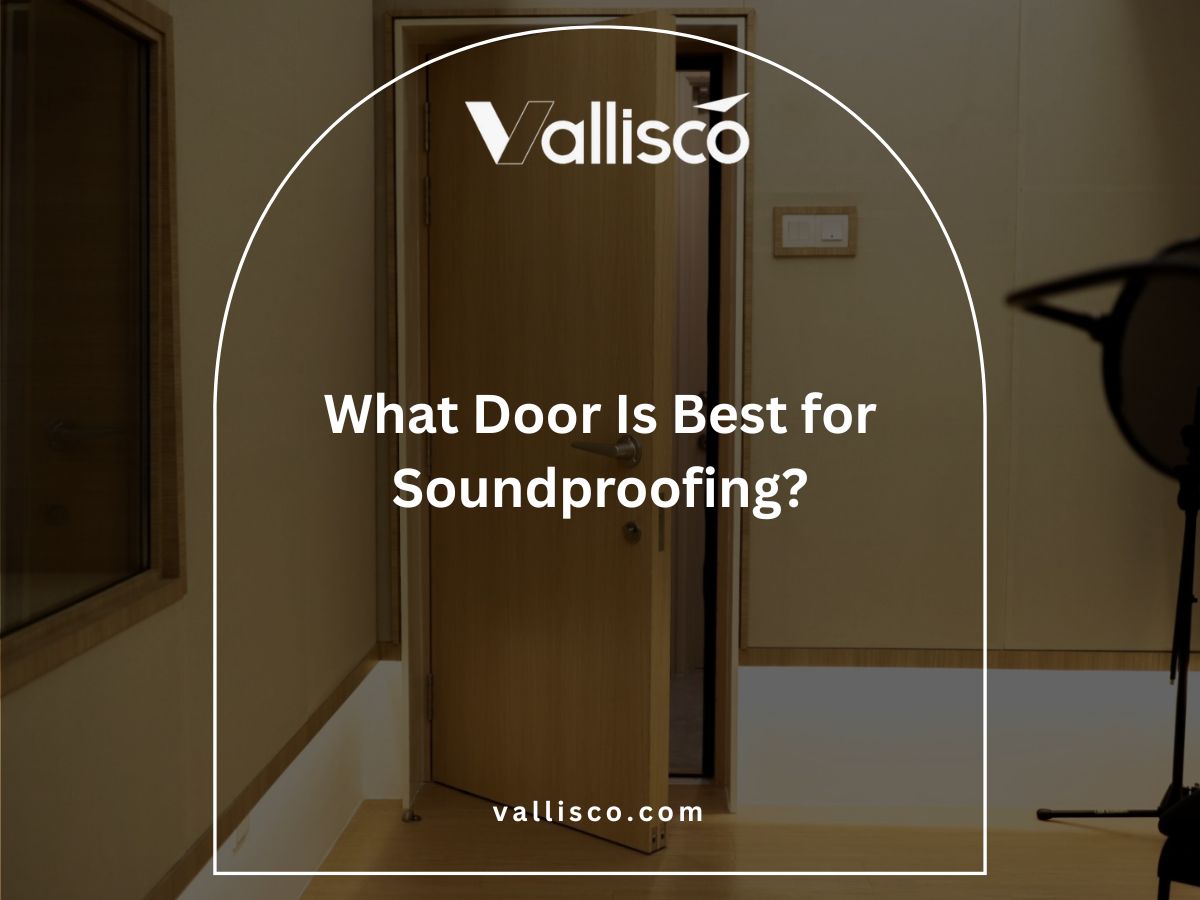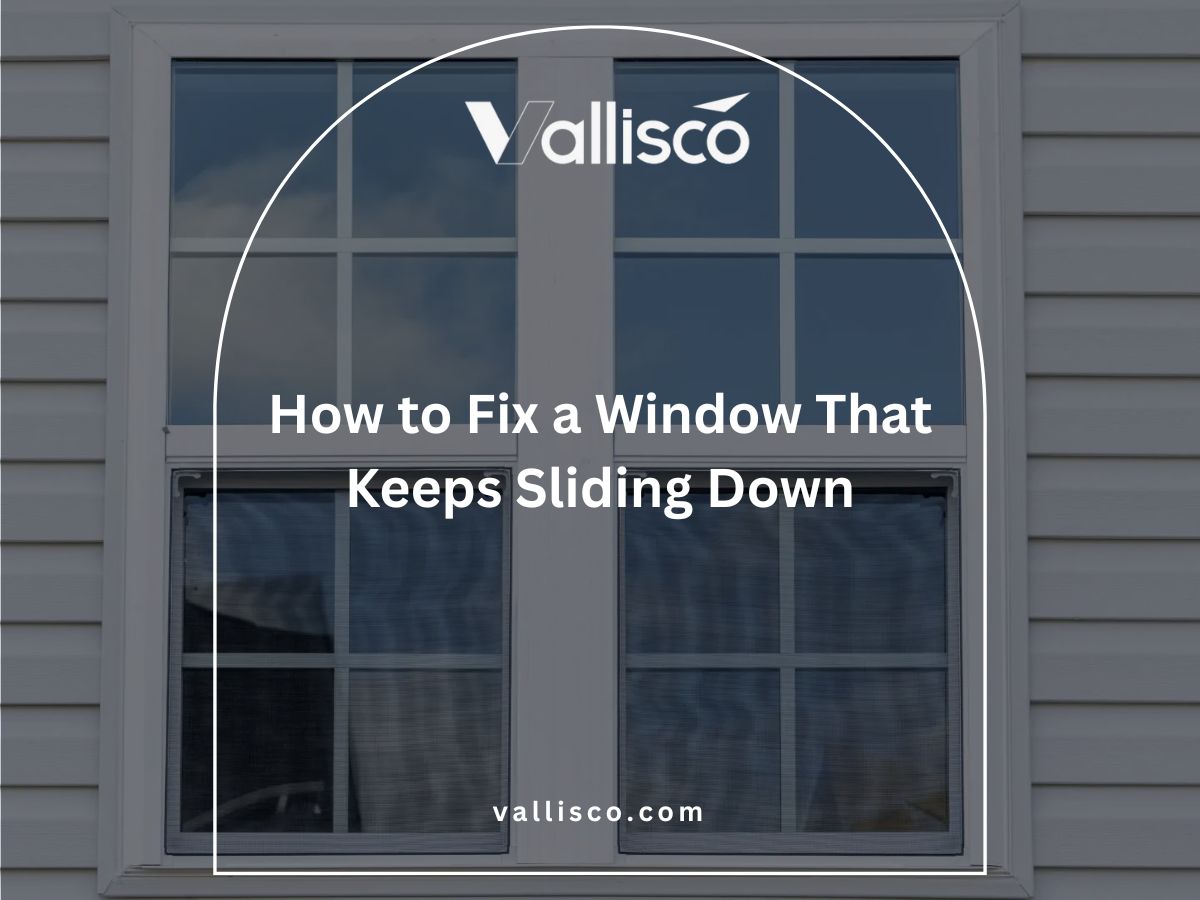A client once told me how a single fire door stopped flames from spreading through an entire floor. That one decision saved thousands of them in repairs and, more importantly, kept tenants safe.
These stories stay with you because they show how small choices can have big effects in an emergency.
I work with teams who handle buildings every day, owners, engineers, and contractors. This article comes from what I’ve seen work in real projects across different regions.
You’ll find in this article:
- The role of a fire door in apartment safety planning
- Key buying considerations
- How to keep doors working as they should
Your next project deserves the right protection from the start.
Let’s get into it!
1. What is an Apartment Fire Door?
I’ve seen many apartment projects where the fire door is treated like any other door. But it’s not. A fire door in an apartment is built to slow down flames and smoke, giving people inside more time to get out and helping limit damage to the building. It’s part of the building’s safety system, just like alarms and sprinklers.
For you, as an owner or engineering team, it’s more than a code requirement. It’s a line of defense that protects your tenants, your property, and your investment. A proper fire door apartment setup can mean the difference between a contained incident and a full-scale loss. That’s why it’s worth knowing exactly what these doors do and how they work.
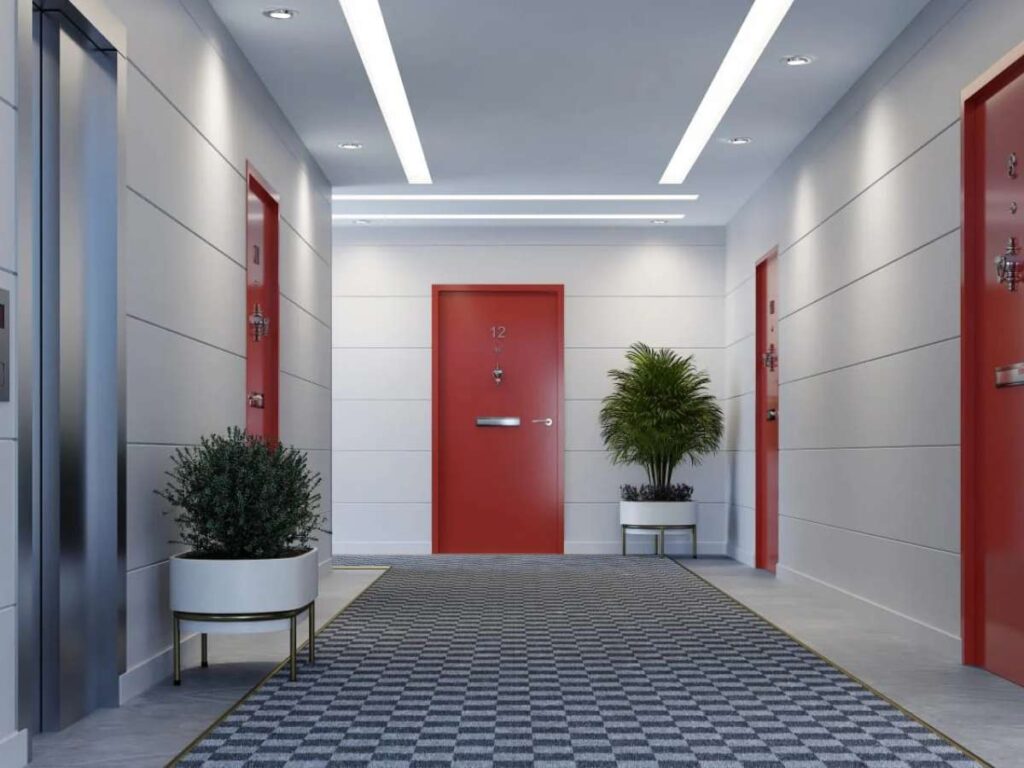
2. Components of a Compliant Fire Door System
When I walk a site with a client, I often see fire doors that look fine at first glance but are missing key parts. A fire door apartment system is more than just the door itself, it’s a set of components that work together during a fire. If one piece is missing or damaged, the whole system can fail.
Here’s what you need to know about each part:
| Component | Purpose | What to Check |
| Door Leaf | The main part of the fire door that resists fire and smoke. | Look for damage, warping, or signs it has been altered. |
| Door Frame | Holds the door leaf in place and keeps the fire seal intact. | Ensure it is securely fixed and free from gaps. |
| Intumescent Seals | Expand in high heat to block flames and smoke. | Check they are continuous and not damaged or missing. |
| Self-closing Device | Closes the door automatically after it’s opened. | Test that it works smoothly and closes fully without force. |
| Hinges | Allow the door to swing open and shut safely. | Use fire-rated hinges, tightly fixed with all screws in place. |
| Glazing (if present) | Fire-rated glass that allows visibility while maintaining fire resistance. | Inspect for cracks and confirm it’s labeled fire-rated glass. |
| Locks and Latches | Keep the door closed under fire conditions. | Ensure they operate properly and are fire-rated where required. |
Every part of a fire door apartment system matters. You can have the right door leaf, but without proper seals or a working closer, it won’t do its job when it counts. Regular checks keep all these components ready.
3. Fire Door Ratings and Classifications
When I help clients choose a fire door apartment setup, one of the first things we talk about is its rating. This isn’t just a label, it tells you how long the door can hold back fire and smoke. If you get this wrong, you could face compliance issues or, worse, put people at risk.
Below are the main categories you’ll see, with details on what they mean for your building:
Time-Based Fire Ratings
- FD30: This door can resist fire for 30 minutes. Often used in smaller residential settings or where evacuation times are short.
- FD60: Holds back flames and smoke for 60 minutes. Common in larger apartment blocks where escape routes take longer.
- FD90: Protects for 90 minutes. This is less common but useful for high-risk areas or critical escape routes.
- FD120: Provides 120 minutes of protection. Typically seen in industrial or special-use buildings, not most apartments.
Smoke Control Ratings
- S: Indicates the door has smoke seals to stop the spread of cold smoke. Important for keeping escape routes clear in the early stages of a fire.
- Sa: Tested for smoke leakage at ambient temperatures. Helps prevent smoke spreading through small gaps even before heat builds up.
- Sm: Tested for smoke control at medium temperatures. Offers better protection in corridors and stairwells.
Glazed vs. Solid Fire Doors
- Solid Core: Made of solid materials for maximum fire resistance. Heavier and usually more durable.
- Partially Glazed: Includes fire-rated glass panels. Allows visibility while maintaining fire protection.
- Fully Glazed: Entire door is made of fire-rated glass. Requires specific framing and seals.
Certification Marks
- Manufacturer’s Label: Shows compliance with test standards. Without it, the door may not pass inspection.
- Third-Party Certification: Adds assurance that the door meets the rating claimed by the manufacturer.
- Test Standards: Check for standards like BS 476 or EN 1634, depending on your region.
Regional Classification Systems
- British Standards (BS): Uses FD ratings (e.g., FD30, FD60) widely recognized in Southeast Asia and Europe.
- European Standards (EN): Uses EI classifications, focusing on integrity (E) and insulation (I).
- Local Codes: Some regions have added requirements based on building type.
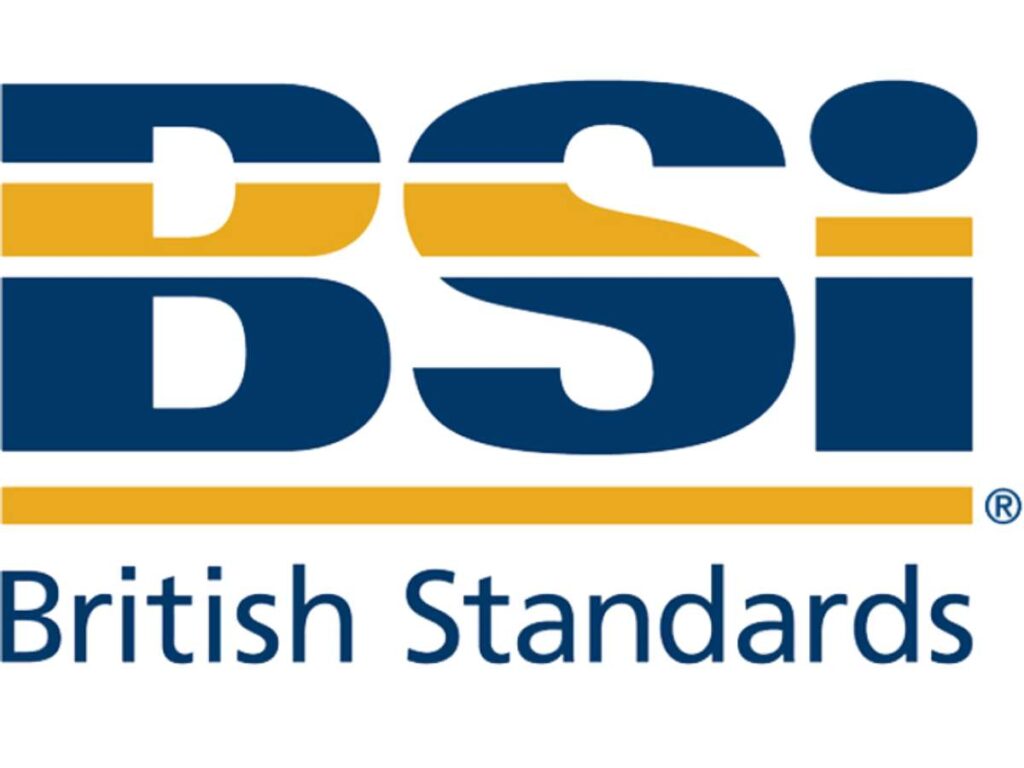
4. Key Features to Look For
When I work with owners or engineering teams on a fire door apartment project, I always say the same thing, look past the surface. A door can look strong but still fail in a fire if it’s missing the right features. These points will help you choose doors that do their job when it matters most.
- Certified Fire Rating: Fire doors from Vallisco has been tested and labeled to meet recognized standards. Without this, you can’t be sure it will perform in a real fire or pass inspection. Always check the label before you approve an order.
- Smoke Seals: These expand in heat and block smoke from moving through gaps. Early smoke spread can make escape routes dangerous, so this small feature plays a big role in safety.
- Self-Closing Mechanism: A fire door is only effective when it’s shut. A good self-closing device ensures the door closes automatically after someone passes through, without slamming or sticking.
- Fire-Rated Hardware: Hinges, locks, and handles all need to be fire-rated. If any of these fail under heat, the whole door system can fail too. Always match the hardware rating to the door rating.
- Durable Construction Materials: Look for solid core or approved fire-resistant composites. These materials can handle both the heat of a fire and the wear of daily use in busy apartment settings.
5. Maintenance & Inspection Requirements
I’ve seen apartment fire doors that looked fine from a distance but failed testing because of small, overlooked issues. Maintenance isn’t just about keeping things tidy, it’s about keeping the door ready for the one time it’s truly needed. A regular inspection plan protects both compliance and safety.
Regular Visual Checks
You or your maintenance team should walk through the building and look over each fire door at least once a month. Check for obvious damage like cracks, dents, or warped areas that could stop the door from closing properly. Look at the frame as well, since gaps or loose fixings can make the whole system fail in a fire.
Pay attention to the seals, they should be unbroken and firmly in place. Even a small gap in a smoke seal can let smoke travel quickly through a corridor. If anything looks out of place, make a note and get it fixed before it turns into a bigger problem.
Testing Self-Closing Devices
A fire door apartment setup relies on the self-closing mechanism to work automatically during a fire. Test it by opening the door halfway and letting it go, it should close fully without sticking, dragging, or slamming. If it doesn’t, it may need adjustment or replacement.
Also, watch for anything blocking the swing of the door, like mats or furniture. Even well-fitted closers can fail if there’s something in the way. Consistent testing means the door will work as expected when it counts.
Checking Hardware and Signage
Hinges, locks, and latches need to be secure and in good condition. Fire-rated hinges should have all screws in place and no signs of rust or wear. The latch should engage fully without forcing the handle.
Signage is also part of compliance. A fire door should have clear “Fire Door Keep Shut” signs or whatever wording your local code requires. Missing or unclear signs can cause people to misuse the door in an emergency.
Annual Professional Inspections
While in-house checks are important, you should also bring in a qualified inspector at least once a year. They’ll test the door against the original certification and make sure every part meets the required standard.
This step is especially important for larger apartment buildings where the fire door system is critical to evacuation safety. A professional report also gives you a record for insurance or compliance audits. Skipping this can leave you exposed to liability if something goes wrong.
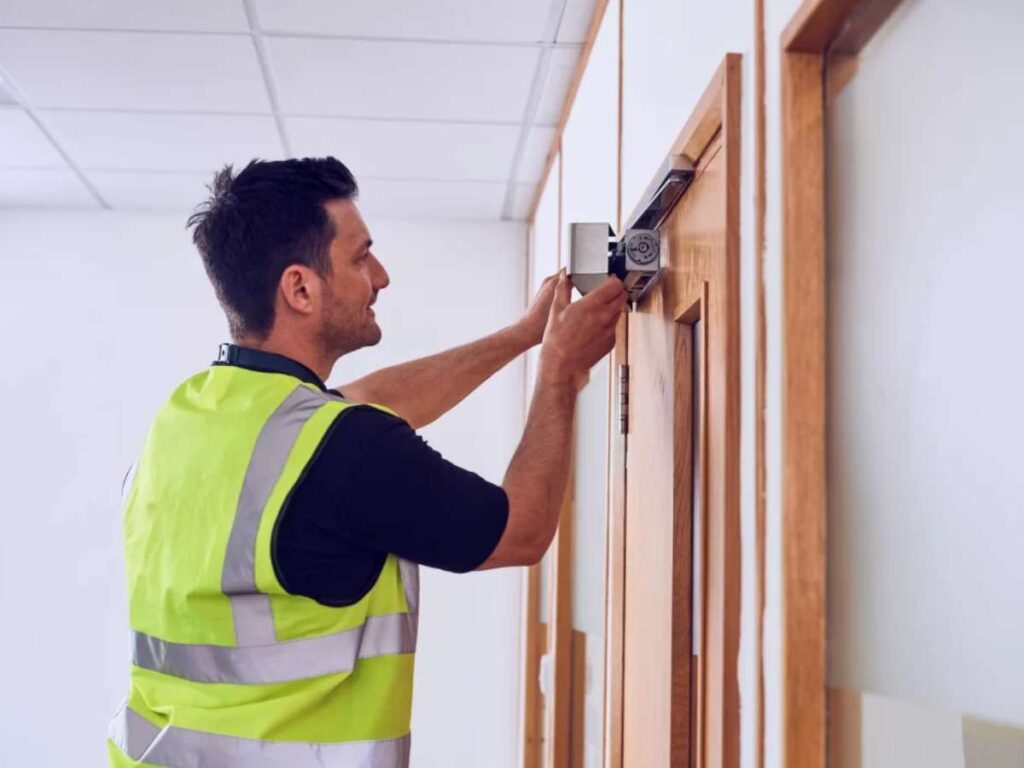
6. Apartment vs. Commercial vs. Other Types of Fire Doors
I’ve worked with clients who thought all fire doors were the same. The truth is, apartment fire doors have specific features that make them different from doors used in offices, factories, or public buildings.
If you’re supplying or managing a building, knowing these differences helps you choose the right door for the right job.
| Type | Where It’s Used | Main Purpose | Key Differences |
| Apartment Fire Door | Entrances to individual units, corridors, and stairwells in residential buildings. | Contain fire and smoke within one unit or floor, giving residents time to escape. | Focus on both fire resistance and smoke control, often with self-closing devices and strong seals for shared spaces. |
| Commercial Fire Door | Offices, retail spaces, and mixed-use buildings. | Protect staff and visitors while limiting damage to inventory or equipment. | May prioritize higher fire ratings for large open spaces, but not always designed for constant residential use. |
| Industrial Fire Door | Factories, warehouses, and manufacturing facilities. | Separate hazardous or high-risk zones from other work areas. | Often made from heavier materials like steel, built for extreme conditions, not for daily residential traffic. |
| Specialty Fire Door | Hospitals, schools, and public facilities. | Combine fire protection with accessibility, visibility, or hygiene requirements. | May include wider openings, glazing for visibility, or hands-free operation, depending on the setting. |
Choosing a fire door apartment setup is not just about meeting a fire rating, it’s about meeting the way people live and move in the building. A door that works well in a factory or shop might fail to meet the daily demands of a residential space.
7. What to Look for When Choosing a Fire Door
When I help clients select a fire door apartment system, I always tell them, it’s about more than just picking the right size and style. You need to think about safety, compliance, and how the door will hold up over time. The wrong choice can mean costly replacements or worse, a safety risk.
Match the Fire Rating to the Building’s Needs
Start by looking at your building layout, number of floors, and evacuation routes. A smaller apartment block might meet code with FD30 doors, while a high-rise with long corridors could need FD60 or more.
Your local regulations will set the minimum standard, but think beyond the bare minimum. Extra minutes of fire resistance can protect more lives and reduce damage. If in doubt, consult with a fire safety engineer before placing an order.
Check for Verified Certification
A door without proof of testing is a risk you don’t need. Always look for a label or plate showing it’s been tested to a recognized standard such as BS 476 or EN 1634.
Third-party certification gives you even more confidence that the door performs as claimed. Keep the documentation, as auditors, inspectors, and insurers will want to see it. Without it, your compliance position is weak even if the door looks right. Vallisco manufactures fire doors that meet strict testing standards, giving buyers clear proof of compliance.
Prioritize Quality Hardware and Components
The door leaf gets most of the attention, but hinges, closers, seals, and locks do just as much to keep the system working during a fire. If one part fails under heat, the whole system can be compromised.
Use hardware that’s fire-rated to the same level as the door. This means matching FD60 doors with FD60-rated hinges and closers. Cheaper, non-rated parts may save a little upfront, but can cost far more in safety and liability later.
Consider Long-Term Maintenance and Usage
An apartment fire door will be opened and closed dozens of times a day. Look for durable materials and well-built hardware that can handle high traffic without constant repair.
Also, think about how easy it will be for your team to inspect and maintain the door. Features like adjustable closers or replaceable seals can make long-term upkeep simpler. A good choice now means fewer problems and costs in the years ahead.
Conclusion
The fire door that stops an entire floor from going up in flames is proof that smart choices save lives.
We’ve covered what makes a compliant apartment fire door, how to choose one, and how to keep it working for years. Now it’s about action.
Review your buildings. Check your doors. Replace what’s not right. A strong system starts with a reliable supplier.
Vallisco offers certified fire doors built to the standards we’ve discussed. Your tenants, guests, and property deserve that level of protection.
Contact us today and take the first step toward a safer, compliant building.
Discover More Options
There’s so much more to discover! Check out our other products and find what fits your needs:
Still haven’t found what you’re looking for? Don’t hesitate to contact us. We’re available around the clock to assist you.



